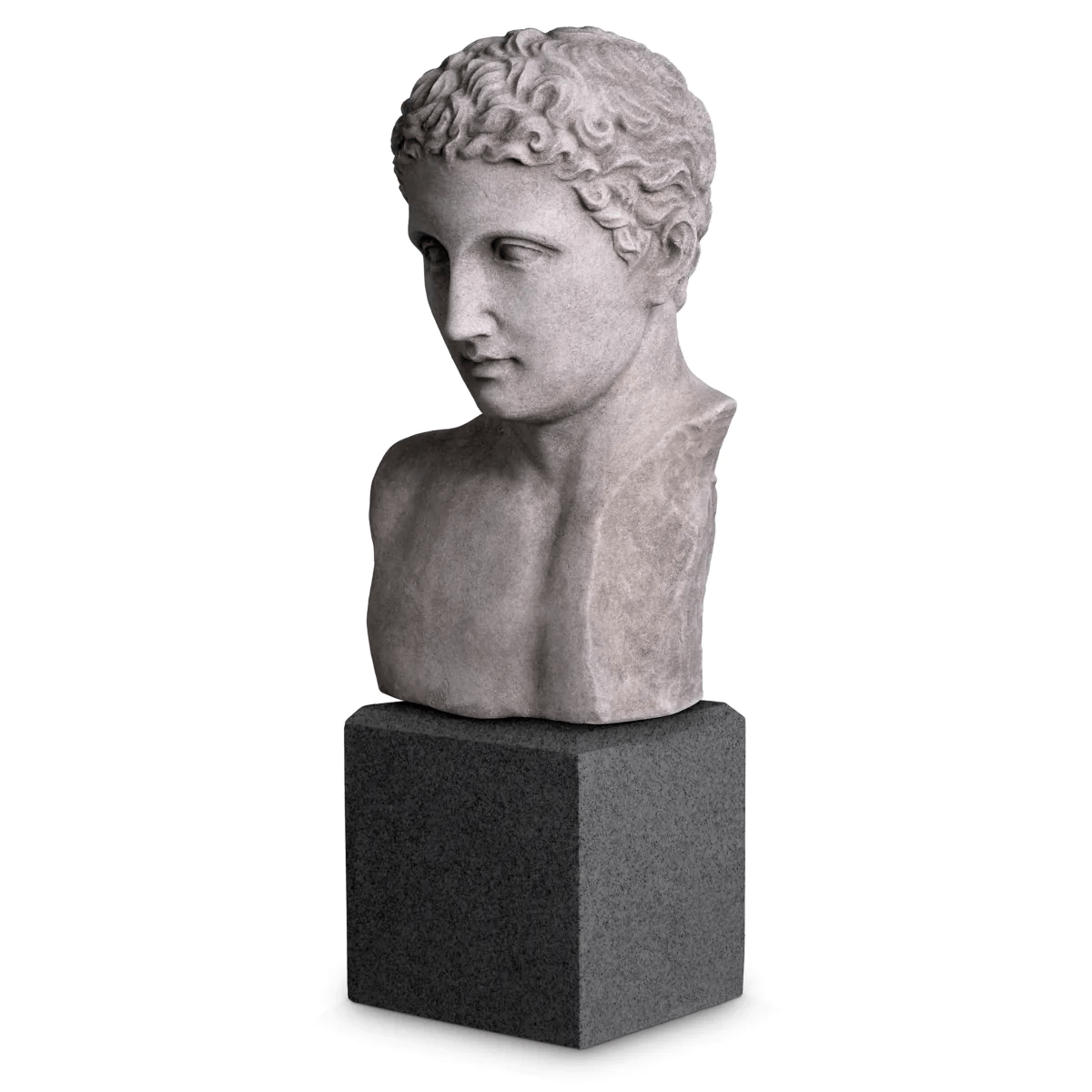

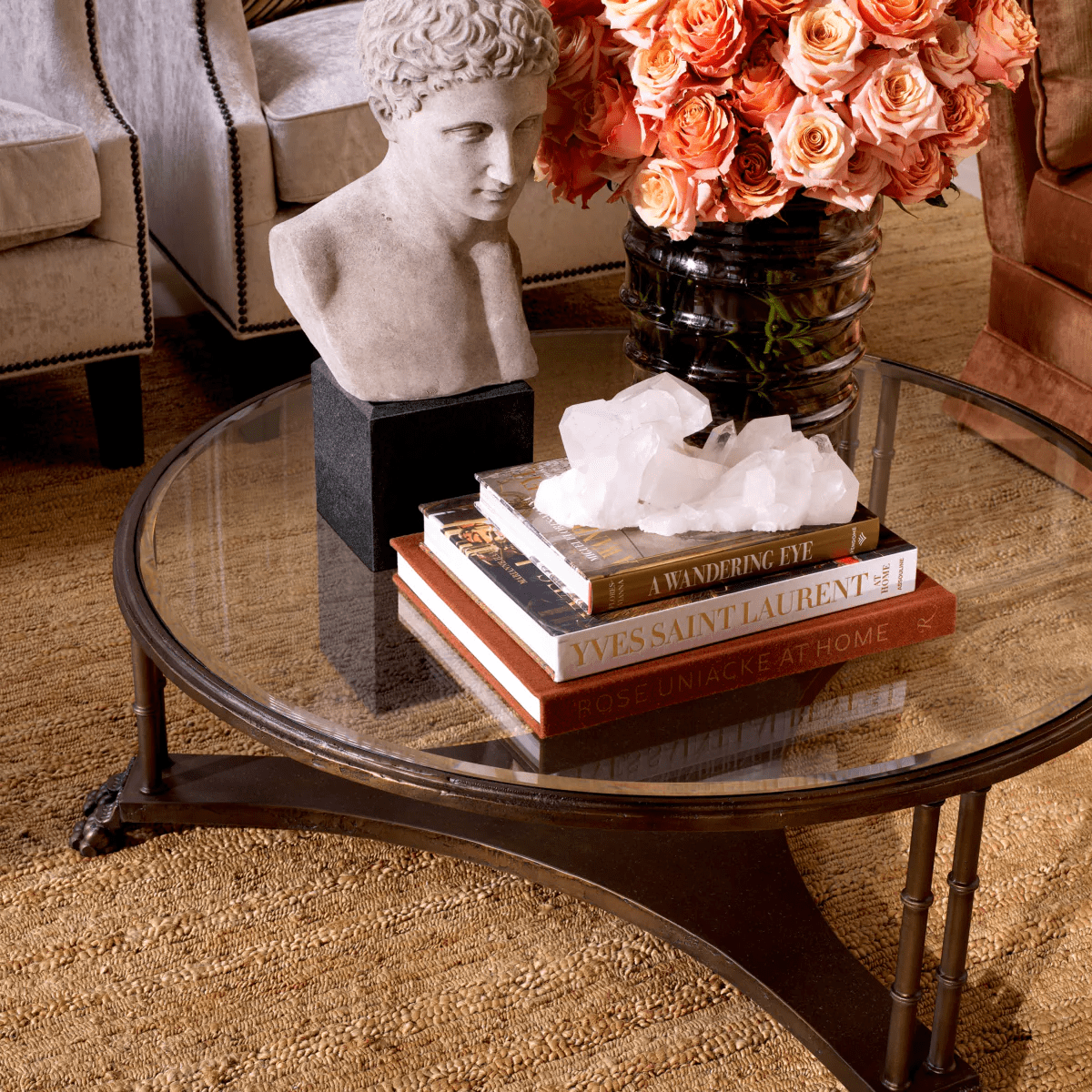
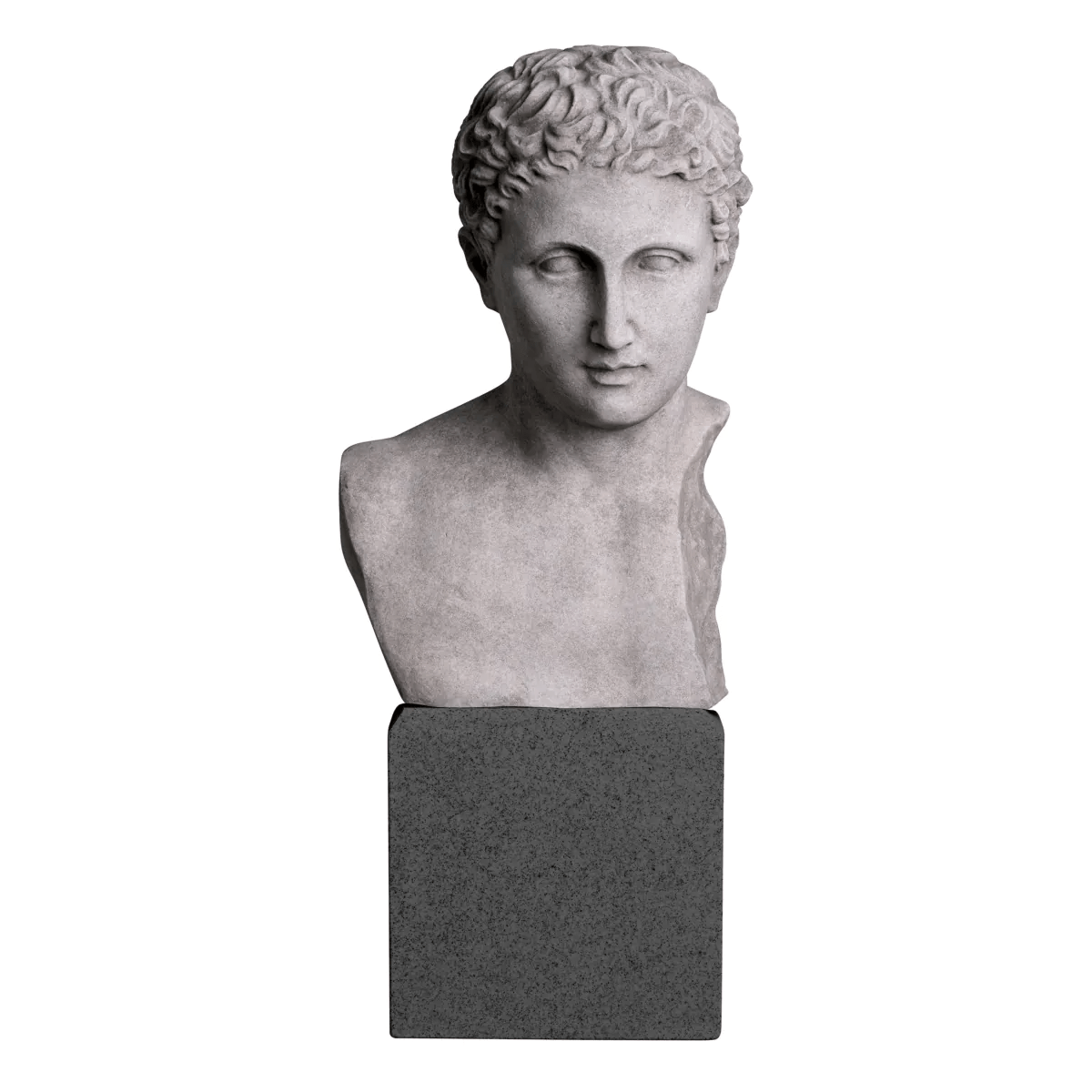
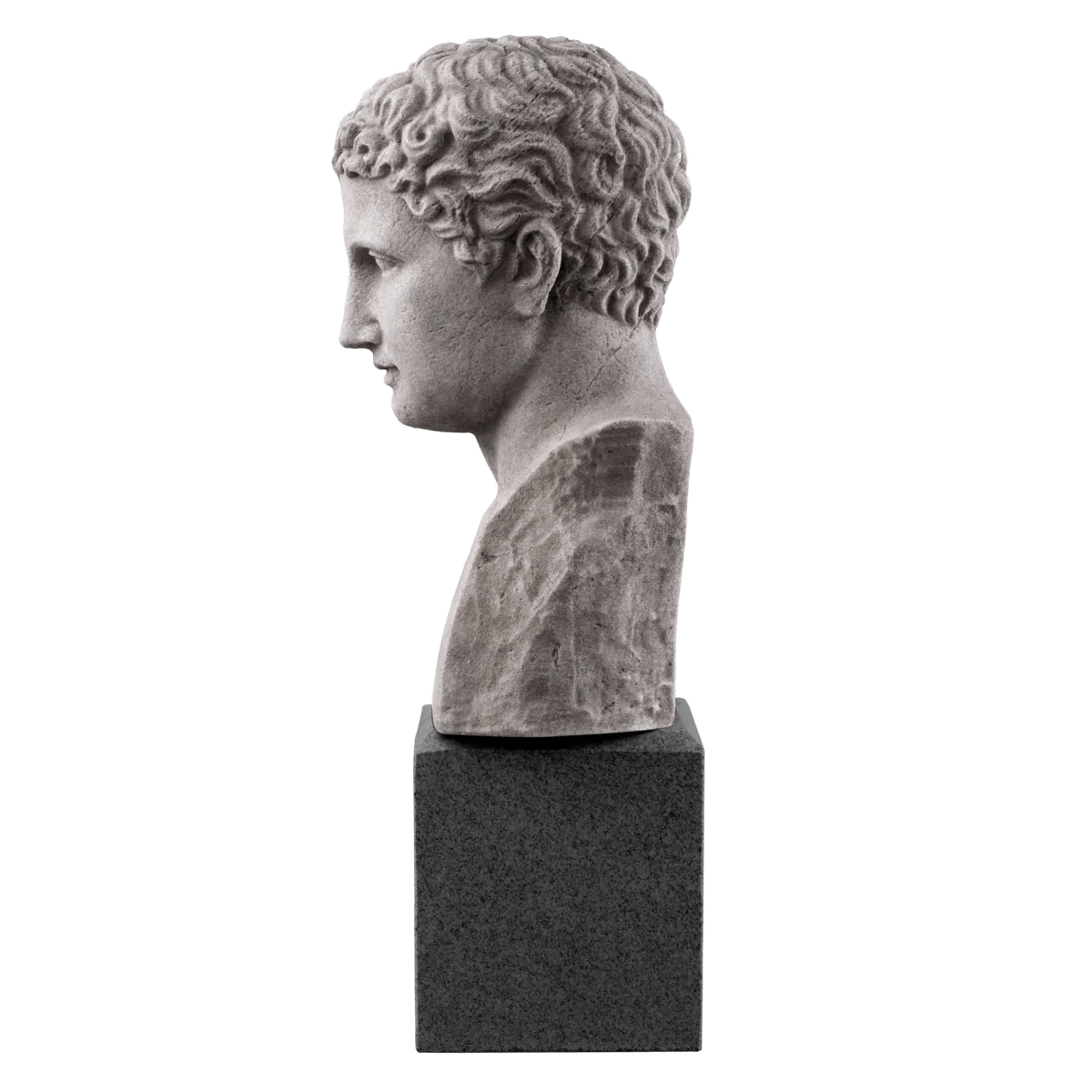

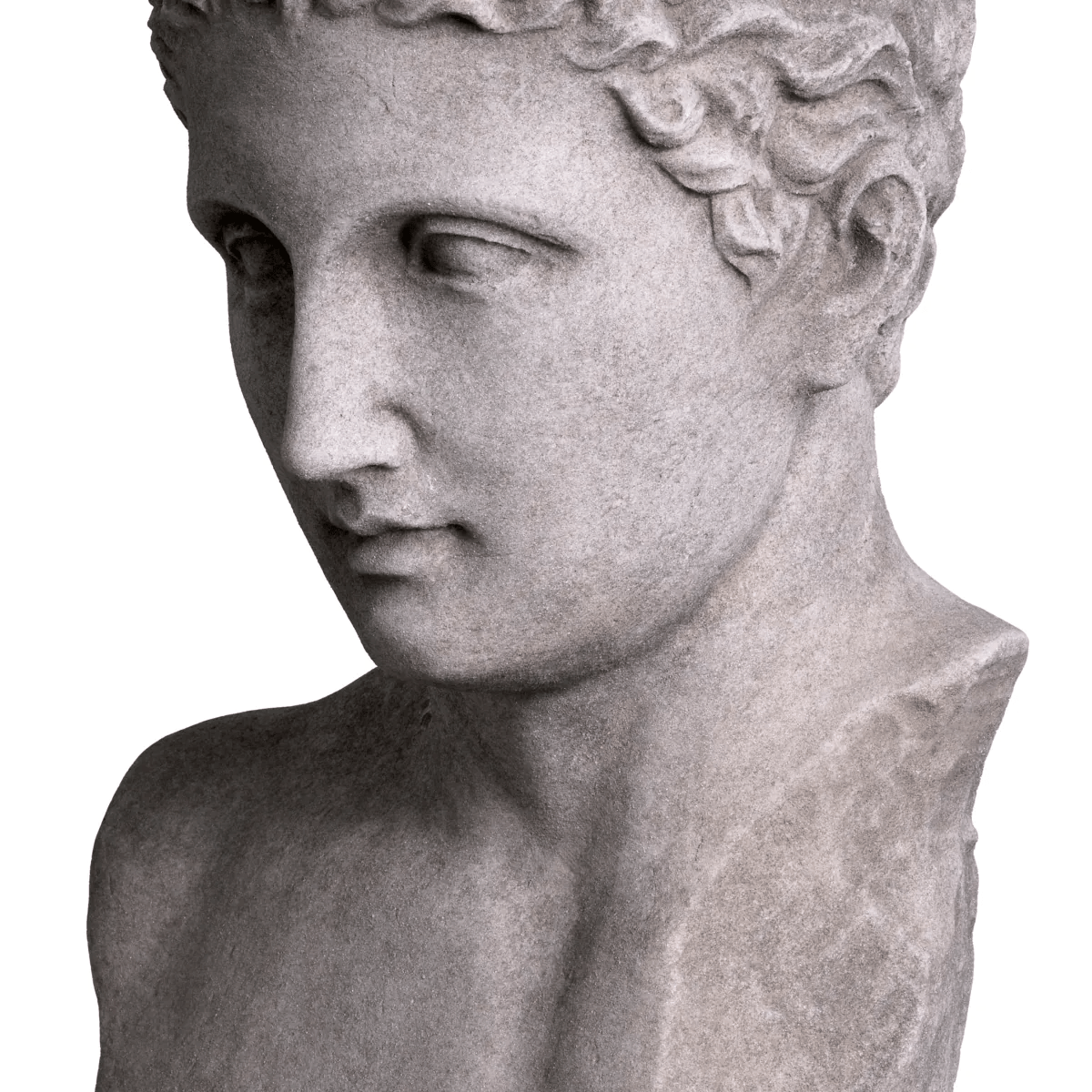
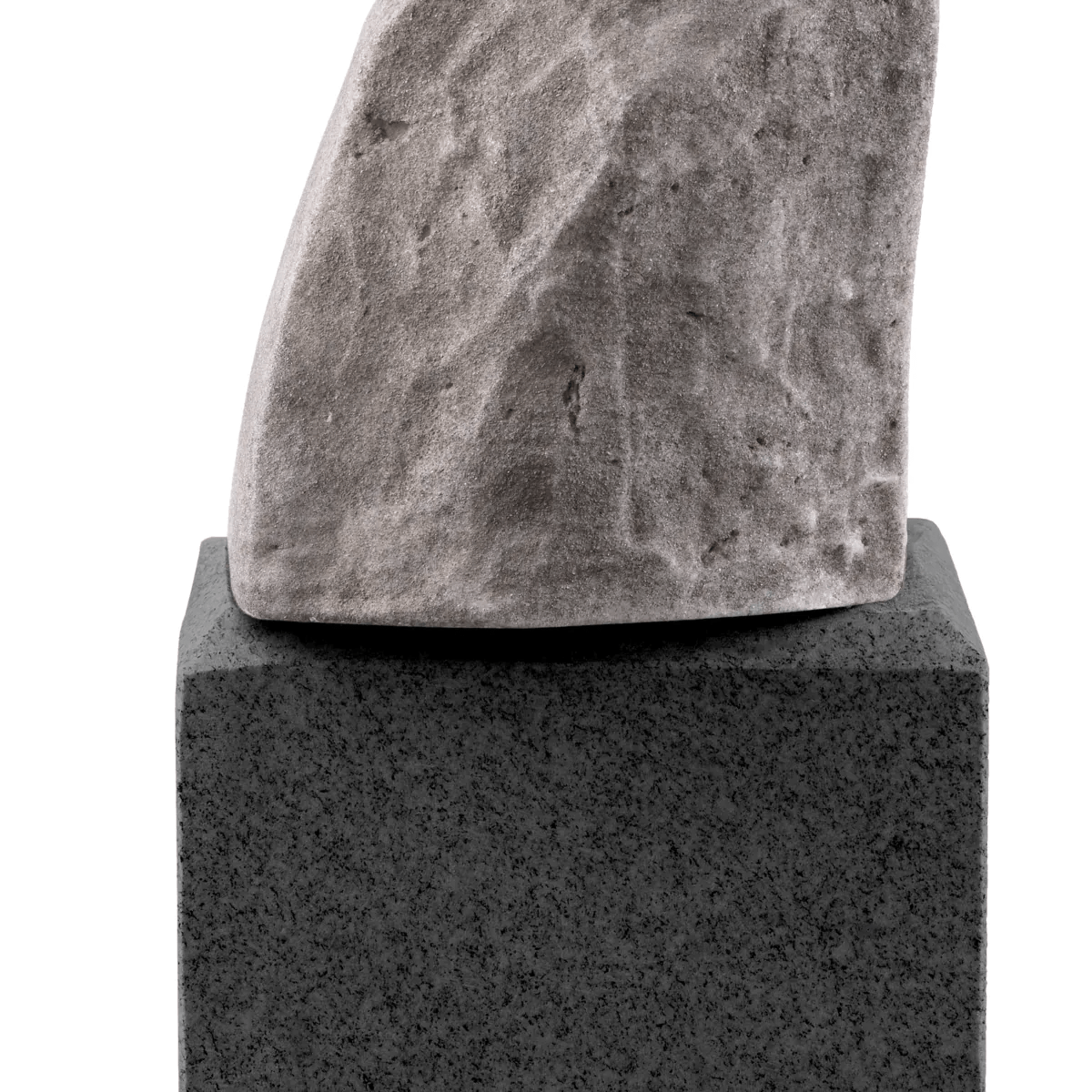
Bust Roman Imperial stone antique look
2125 €
The “Bust Roman Imperial” pays homage to the classical beauty of ancient Greece.
Handcrafted from marble, each piece is unique, distinguished by variations in color and veining. This bust echoes the head of a Greek statue from the 4th century B.C., possibly portraying Herakles or a triumphant athlete. Romans often transformed these classical masterpieces into decorative sculptures, leaving an enduring legacy of timeless elegance.
HISTORIC PROVENANCE
The Bust Roman Imperial is influenced by a 1st- or 2nd-cenThe Bust Roman Imperial is influenced by a 1st- or 2nd-century Roman copy of a Greek statue depicting Herakles or a victorious athlete dating back to the 4th century B.C. The Roman bust of a youth at The Metropolitan Museum of Art in New York typifies how the Romans often crafted decorative works by recreating the heads of well-known Greek sculptures on busts or rectangular herms. This carefully carved reinterpretation has been created in marble and rests upon a granite-style plinth.
Specifications
Extra info-Marble is a natural material, each piece differs in color and veiningIndoor/outdoor-Indoor use/dry locations only
Care instructions

How to care for wood veneer
Veneer furniture is covered in a thin layer of real hardwood. Veneers are often used in high end furniture pieces and can be more costly than solid wood. Mid 20th century it became especially popular in interiors when teak wood was often used for Danish design furniture.
To fully enjoy your wood veneer furniture, please follow a few basic rules:
Cleaning and maintenance
Wood veneer requires gentle care to preserve the finish. Dust regularly and clean with a soft dry cloth.
Remove spills immediately as moisture can cause the veneer to peel off the surface. Prevent moisture from getting underneath the veneer by quickly and thoroughly cleaning up any spills. In case of water rings, rub the area with naphtha. Follow up with an application of oil or petroleum jelly to completely erase the mark.